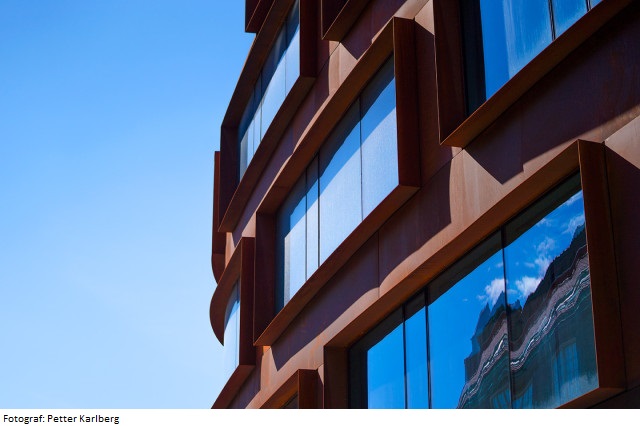• On site observations
• Confrontation with a complex international planning and design solutions,
• Program analysis,
• holistic process and final product: from design to final graphics,
A52Y1B Architecture/Practice Related Studio 5:1 12.0 credits
This course has been discontinued.
Decision to discontinue this course:
No information inserted
Information per course offering
Course offerings are missing for current or upcoming semesters.
Course syllabus as PDF
Please note: all information from the Course syllabus is available on this page in an accessible format.
Course syllabus A52Y1B (Autumn 2012–)Content and learning outcomes
Course contents
Intended learning outcomes
Check point “Europe” (1) (5th year)
Overall goals
The project is part of the Practice Based Research Studio.
Studio Description: The future Architect´s office is the starting point for real and academic project investigations, practise based research and team work. Among other methods this Studio uses architectural competitions as a tool for progression.
2. The course/project goal is to increase the student's knowledge in this area/field and skills/knowledge in the field of architecture in general. The students will enter the project with varying degrees of knowledge/skills and will subsequently end up at different levels at the end of the course/project.
3. The individual student must show an increase in the particular skills/knowledge offered in the studio and in the field of architecture in general.
Course goals
1. Practise Based Research studio –Europe’s edge: This first leg of the studio will deal with the regions bordering the
“united states of Europe” Sicilia and Sweden and theirs unique cultural socio/economical and political conditions. We shall investigate these issues in order to participate in the next” expansion ring” of the European Union. We shall create a strategy and a large scale plan for a small town and/or region of the above mentioned country, than develop a concept for part of large scale plan, a project that mixes European philosophy and local social political connotation.
2. The Project Goals are to create awareness and develop personal and contextual architectural capacities such as:
• Personal Architectural language,
• Contextual architecture solutions
• Social political and cultural awareness
• Front line project design
3. Each student shall exhibit his/hers own thinking/production process and his/hers contribution to the team work that is part of the first leg of the course.
Literature and preparations
Specific prerequisites
One year fully approved architectural studies at the advanced level, courses and projects.
Literature
A complete list of reading material will be delivered at the start of the course
Examination and completion
Grading scale
Examination
- PRO2 - Project part 2, 3.0 credits, grading scale: P, F
- PRO1 - Project part 1, 9.0 credits, grading scale: P, F
Based on recommendation from KTH’s coordinator for disabilities, the examiner will decide how to adapt an examination for students with documented disability.
The examiner may apply another examination format when re-examining individual students.
If the course is discontinued, students may request to be examined during the following two academic years.
The course consists of two parts; a fulfilled and delivered project work (9 credits) and a passed final assessment (3 credits). There is at least one intermediate assessment during the course.
Other requirements for final grade
a) Presentation requirements
Presentation material l(individual):
• Sketch book with material sketched during the course.
• Graphic concept for solution ideas
• Site plan 1:1000 and 1.500
• Planning strategy idea (four A-1 pages)
• At list 4 perspectives
• Large model of the project in site 1:1000
• Al least 2 working models
• All the above material shall reflect consequence in form and graphic design and shall be presented on 6 A-1´s
• Notice that an alternative presentation could be suggested by the students or teachers.
All material shall be designed so it can be transformed into A-4`s so we can produce a book of the project
Presentation material l(groups):
• Sketch book with material sketched during the course.
• Graphic concept for solution ideas
• Site plan and sections 1:1000 and 1.500
• Planning strategy idea (minimum six A-1 pages)
• At list 6 perspectives
• Large model of the project in site 1:1000
• Model of project 1:500
• Al least 2 working models
• All the above material shall reflect consequence in form and graphic design and shall be presented on 8 A-1´s
• Notice that an alternative presentation could be suggested by the students or teachers.
• All material shall be designed so it can be transformed into A-4`s so we can produce a book of the project
• For groups demand of quality is higher and each individual in the group is expected to produce an equal
amount of work. Also a strategy for group work and communication shall be developed and followed.b) Examination
The studio presentation will be part of the future diploma portfolio and shall be delivered in an appropriate and fully qualified way.
80% attendance. Active participation in lectures, tutorials, and seminars etc. Passed intermediate and final assessments. Compulsory attendance during the assessment reviews.
Completion: The project work shall be delivered and, if necessary, reworked within the set time limit. See general directions.
(Overall principle: Autumn term projects must be approved during the following Spring term: Spring term projects must be approved before the start of the following Autumn term. The reworked projects must be delivered at least one week before the time limit.)
The project work is to be documented in a portfolio, including drawings, analysis and models. The work process shall be legible.
Examiner
Ethical approach
- All members of a group are responsible for the group's work.
- In any assessment, every student shall honestly disclose any help received and sources used.
- In an oral assessment, every student shall be able to present and answer questions about the entire assignment and solution.